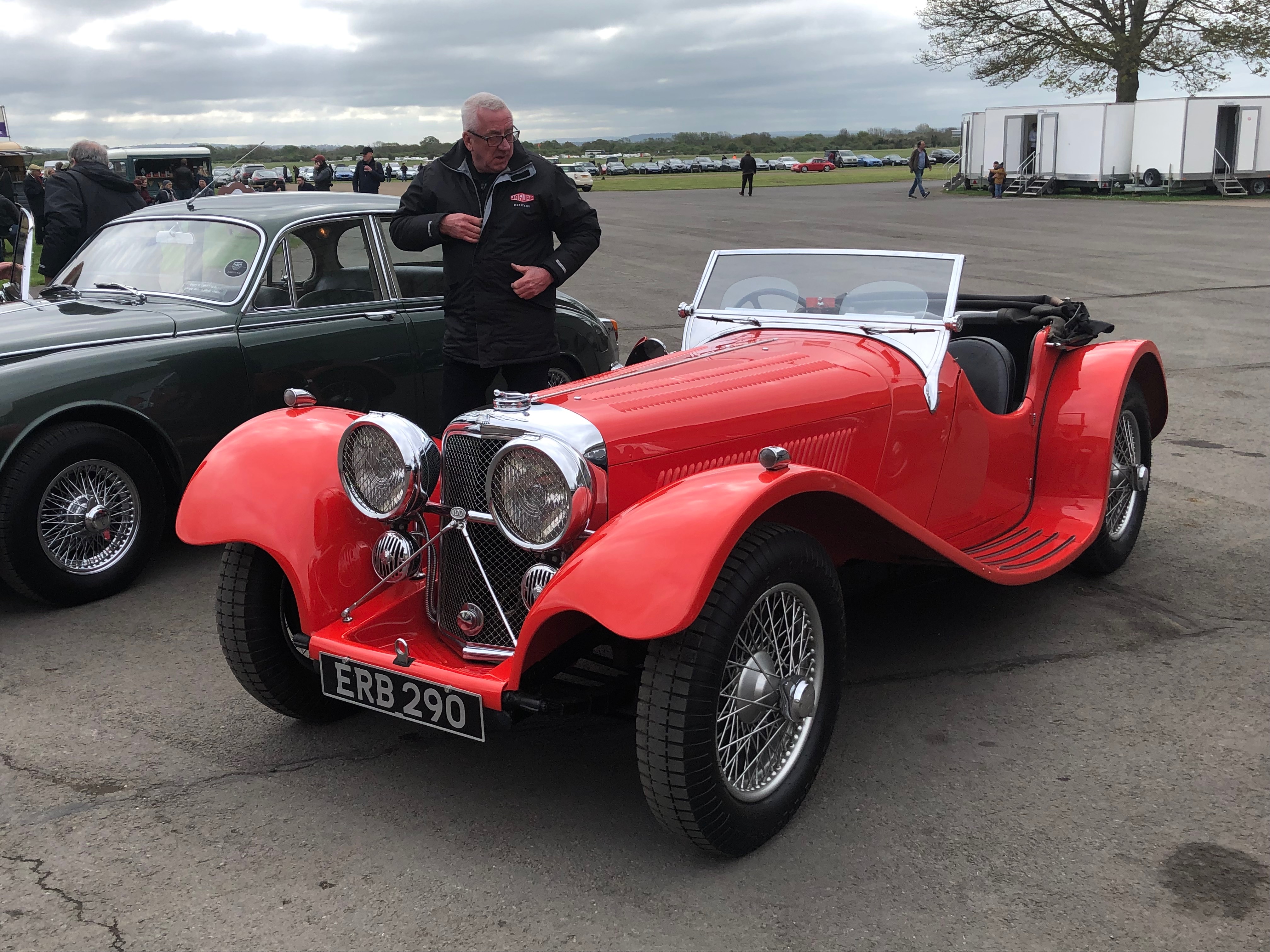-
Insurance
InsuranceAbout our productsLearn about insuringGet a quote Get current values, historical values, model history and more.
-
Valuation
ValuationHagerty valuation toolLook up a vehicle value Get current values, historical values, model history and more.
-
Events
EventsHagerty official eventsHagerty ClubhouseEvent calendar
-
Entertainment
EntertainmentMore to explore
- Portal login
1939 Jaguar SS100
3.5 Roadster 3.5 L
Vehicle values by condition
Fair
Condition 4
£243,000
#4 cars are daily drivers, with flaws visible to the naked eye. The chrome might have pitting or scratches, the windshield might be chipped.
Good
Condition 3
£341,000
#3 cars could possess some, but not all of the issues of a #4 car, but they will be balanced by other factors such as a fresh paint job or a new, correct interior.
Excellent
Condition 2
£451,000
#2 cars could win a local or regional show. They can be former #1 cars that have been driven or have aged. Seasoned observers will have to look closely for flaws.
Concours
Condition 1
£594,000
#1 vehicles are the best in the world. The visual image is of the best car, unmodified, in the right colours, driving onto the lawn at the finest concours.
Insurance premium for a
1939 Jaguar SS100 3.5 Roadster 3485
valued at £341,000
£1005.24
/ year*
History of the 1938 - 1939 Jaguar SS100

1938 - 1939 Jaguar SS100
The Swallow Sidecar company, or SS Cars Ltd, started manufacturing motorcycle sidecars in the late 1920s, graduating to the SS1 saloon in 1931. SS Car's new 'Jaguar' name was introduced to the model range with the 1 1/2-litre saloon and the 2 1/2-litre SS100 in 1936, following the single year of production of the SS90 in 1935. It was to be the first in a long line of real performance cars produced by SS Cars Ltd, and was derived by shortening the SS Saloon's 120-inch wheelbase to 102 inches.
The SS100 Jaguar came firstly in 2 1/2-litre roadster form and is remembered as the most flamboyant British two-seater sports car of the 1930s. It sported a long louvered bonnet, lengthy flared and flowing wings with connected running boards, a slab fuel tank, cutaway doors, and enormous headlamps. The view from the cockpit for both driver and passenger over the double dash cowlings, Brooklands aero-screens, fold-flat windscreen, and then across the bonnet and headlamps—with the Jaguar leaping mascot popped on the radiator cap—was spectacular. Handling, on the other hand, had a reputation for being a bit tricky when pushed hard. Equipped with competition-style fly-off handbrake and large white-background instruments provided for the driver, the SS100 had everything a sporting motorist of the era could want.
The SS100’s engine was a newly developed overhead valve version of Standard's side-valve unit by Harry Weslake. A 6-cylinder 2,663-cc engine with 102 bhp at 4,600 rpm on twin SU carburettors, 96mph was possible for the smaller-engined SS100 which was also fitted to the concurrent 2 1/2-litre saloon. Suspension was by half elliptical springs all round with solid axles. Superb performance for the day, with great power to weight ratio at 18 ¼ cwt, anything over 100 bhp per ton produced lively performance, and at 12'6" in length, it was not a large car. Just 198 SS100 2 1/2-litres were built between 1936 and November 1940, with an attractive starting price of just £395.
William Lyons had his eye on the competition market, and success came instantly. An SS100 won the tough International Alpine Trial, driven by Tommy Wisdom with his wife in the first year of production, beating Bugatti and making the marque's international impression on the overseas public. Wisdom went on to race very successfully at Brooklands and the Shelsley Walsh hillclimb. Three SS100s then won the team prize at the RAC Rally in 1937.
The 3 1/2-litre SS100 was introduced in 1938, and came about by modifying the engine to increase the bore from 73 mm to 82 mm, and the stroke from 106 to 110 mm. Engine capacity was increased from 2,663 cc to 3,485 cc. Larger valves were fitted together with stronger con-rods and main bearings. With the longer stroke, peak power now came in at 4,250 rpm to the old 4,600rpm, and the compression ratio was reduced from 7.6:1 to 7.2:1. Brake horsepower rose from 102 to 125, and a new transmission, driveshaft and 3.8:1 differential were added, replacing the lower ratio of 4:1. The result was a 0-60 mph time of just over 10 seconds and it topped 100 mph. Just 116 SS100 3 1/2-litre sports cars were delivered, again at an attractive initial price of £445.
By 1943, since the connotations Swallow Sidecar’s initials were associated with Germany's SS, the company's name was changed to Jaguar. Most SS100 were for the home market with just 49 exported, and interest in the car, as now, far exceeded supply. Much as the car is admired, handling is a problem at speed due to the large flared front wings causing front end lift. The combination of this and the very low geared steering box make steering the car a challenge and large corrections are required therefore to keep it going in the desired direction.
Buying an SS100 in near top condition should be the norm as most if not all surviving cars will have been restored by now. All aspects of the car are easy to work on including the Standard engine. Owners of Jaguar SS100s draw attention to their cars wherever they go, with the SS Register of the Jaguar Drivers Club catering for them. With leather seats and a trim mix of leather and top quality carpeting, there is generous room for two suitcases behind the seats for an extended tour.
Hagerty Newsletter
Get your weekly dose of car news from Hagerty UK in your inbox

ADVERTISEMENT